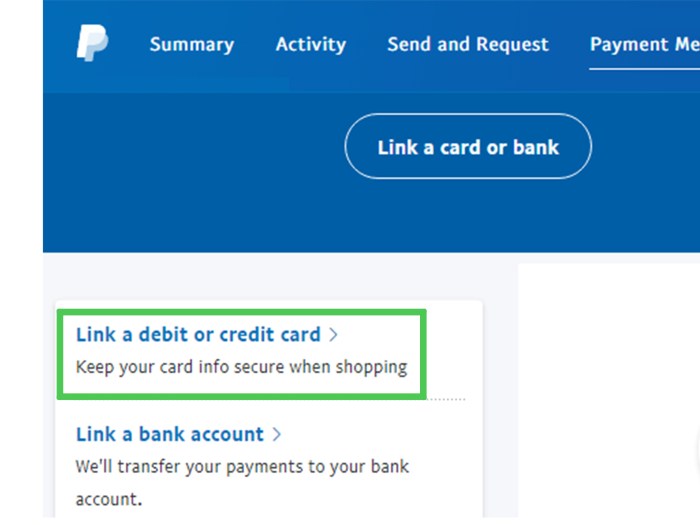
The question of whether you can transfer a student loan to a credit card is a common one, often fueled by the desire for simpler debt management. However, the reality is far more nuanced than a simple yes or no. This exploration delves into the practicalities, pitfalls, and alternatives to this approach, equipping you with the knowledge to make informed decisions about your student loan debt.
This article examines the complexities of transferring student loan debt, comparing the interest rates and terms of both loan types. We’ll explore the potential benefits and drawbacks, highlighting the crucial risks involved and suggesting alternative, more effective debt management strategies. Understanding these nuances is vital for responsible financial planning.
Understanding Student Loan Transfer Options
Managing student loan debt can feel overwhelming, but several strategies exist to help borrowers navigate their repayment journey. Many individuals explore various approaches to reduce their monthly payments or accelerate their debt payoff, often driven by a desire for financial stability and a quicker path to financial freedom. Understanding the nuances of each option is crucial for making informed decisions.
Many attempt to manage student loan debt through various methods, ranging from aggressive repayment strategies to exploring options offered by the government. Some borrowers might prioritize high-interest loans first, while others focus on making the minimum payment across all loans. Some may explore refinancing, consolidation, or income-driven repayment plans, each with its own implications. Unfortunately, misconceptions surrounding these options often lead to poor financial choices.
Common Misconceptions about Refinancing and Consolidation
Refinancing and consolidation are frequently confused, leading to unrealistic expectations. Refinancing involves replacing your existing loans with a new loan from a private lender, potentially at a lower interest rate. Consolidation, on the other hand, combines multiple federal loans into a single loan, usually managed by the government. A common misconception is that refinancing always results in lower monthly payments. While this is often the case, it depends on the new interest rate and loan term. Similarly, consolidation doesn’t automatically lower your interest rate; it simply simplifies the repayment process. Another misconception is that refinancing federal loans with a private lender eliminates access to federal repayment programs like income-driven repayment plans. This is indeed true; once you refinance federal loans into a private loan, those protections are lost.
Legitimate Debt Management Strategies
Several legitimate strategies can help manage student loan debt effectively. Income-driven repayment plans adjust monthly payments based on income and family size, making them suitable for borrowers with limited financial resources. These plans typically extend the repayment period, resulting in higher total interest paid over the life of the loan, but they provide immediate relief for those struggling with high monthly payments. Another strategy is to make extra payments whenever possible. Even small additional payments can significantly reduce the total interest paid and shorten the repayment period. Finally, exploring options for loan forgiveness programs, depending on your occupation, is a potential route to reducing or eliminating your debt. However, eligibility criteria for these programs are strict and vary widely.
Comparison of Debt Management Approaches
| Debt Management Approach | Interest Rate Impact | Monthly Payment Impact | Eligibility Requirements |
|---|---|---|---|
| Refinancing | Potentially lower, but depends on credit score and market rates. Could be higher. | Potentially lower, depending on the new loan term and interest rate. Could be higher. | Good credit score, stable income. Not available for all loan types. |
| Consolidation (Federal) | Generally no change; weighted average of existing rates. | Potentially lower, depending on the repayment plan chosen. | Multiple federal student loans. |
| Income-Driven Repayment (Federal) | No change to interest rate. | Lower monthly payments, but longer repayment period and higher total interest paid. | Federal student loans; income and family size verification. |
| Aggressive Repayment | No change to interest rate. | Higher monthly payments, but shorter repayment period and lower total interest paid. | Ability to make higher monthly payments. |
Credit Card Debt and Student Loans
Understanding the differences between student loan debt and credit card debt is crucial for effective financial planning. Both represent forms of debt, but they differ significantly in terms of interest rates, repayment terms, and long-term implications. Failing to grasp these distinctions can lead to serious financial setbacks.
Interest Rate Comparison
Student loans and credit cards typically carry vastly different interest rates. Student loan interest rates are often lower, especially federal student loans, which are typically subsidized or unsubsidized. These rates are usually fixed, meaning they remain consistent throughout the loan term. In contrast, credit card interest rates are typically much higher and are often variable, meaning they can fluctuate based on market conditions and the credit card issuer’s policies. For example, a federal student loan might have an interest rate around 5%, while a credit card could easily have an interest rate of 18% or even higher. This substantial difference significantly impacts the total amount repaid over the life of the debt.
High-Interest Debt and Long-Term Financial Planning
High-interest debt, particularly from credit cards, can severely hinder long-term financial goals. The compounding effect of high interest means that a significant portion of each payment goes towards interest, rather than reducing the principal balance. This slows down debt repayment and can lead to a cycle of debt that is difficult to break. For instance, a person carrying a high balance on a credit card with a high APR might find themselves perpetually paying interest, making it challenging to save for a down payment on a house, invest in retirement, or achieve other financial aspirations. This can significantly delay or even prevent the achievement of major life goals.
Consequences of Transferring Student Loan Debt to a Credit Card
Transferring student loan debt to a credit card is generally not advisable. While it might seem like a solution in the short term, it often exacerbates the problem. The higher interest rates on credit cards will quickly lead to a much larger overall debt burden compared to the original student loan. Furthermore, many credit cards have minimum payment requirements that are often significantly lower than the minimum payment on a student loan. While this may seem appealing initially, it prolongs the repayment period and increases the total interest paid. Finally, transferring a large student loan balance to a credit card can severely impact your credit score, making it more difficult to obtain loans or credit in the future.
Benefits and Drawbacks of Using a Credit Card for Student Loan Payments
It’s important to weigh the potential benefits and drawbacks before using a credit card for student loan payments.
- Potential Benefits: Some rewards credit cards offer cash back or points on purchases, which could potentially offset some of the interest costs. However, this is only a minor benefit and is highly unlikely to outweigh the negative consequences of high-interest debt.
- Potential Drawbacks: The overwhelmingly significant drawback is the much higher interest rate on credit cards compared to student loans. This leads to significantly increased total interest paid, substantially prolonging the repayment period and potentially causing a snowball effect of debt.
The Risks of Transferring Student Loan Debt

Transferring student loan debt to a credit card, while seemingly appealing, carries significant legal and financial risks. It’s crucial to understand these potential downsides before considering such a move, as it could easily exacerbate your financial difficulties rather than alleviate them. The complexities of interest rates, repayment terms, and the impact on your credit score need careful consideration.
Attempting to transfer federal student loans to a credit card is generally impossible. Federal student loans are governed by specific regulations and are not transferable to other debt instruments like credit cards. Private student loans might offer more flexibility, but even then, transferring them is often impractical due to the high interest rates typically associated with credit cards. This can lead to a rapid accumulation of debt, making the situation far worse than before.
Legal and Financial Risks of Transferring Student Loan Debt
Transferring federal student loans to a credit card is legally impossible. Attempting to do so through fraudulent means could have severe legal consequences, including fines and potential criminal charges. Even with private student loans, the process is unlikely to be straightforward and may involve high fees or unfavorable terms. The primary financial risk is the significantly higher interest rate on credit cards compared to most student loans, leading to a rapid increase in the total amount owed. This increased interest burden can quickly outweigh any perceived short-term benefits of transferring the debt.
Impact of Missed Payments on Credit Scores
Missed payments on both student loans and credit cards severely damage your credit score. Late or missed payments on student loans are reported to credit bureaus, impacting your creditworthiness for years. Similarly, missed credit card payments have an even more immediate and significant negative effect on your credit score, potentially leading to higher interest rates on future loans and difficulty obtaining credit altogether. The consequences of missed payments can be long-lasting and far-reaching, making responsible repayment crucial.
Steps to Take When Facing Difficulty Managing Student Loan Repayments
Facing difficulty managing student loan repayments requires proactive steps to avoid default. First, contact your loan servicer immediately to discuss your situation. They may offer options such as forbearance, deferment, or income-driven repayment plans. Exploring these options can provide temporary relief and help you manage your debt more effectively. Secondly, create a realistic budget to identify areas where you can cut expenses and allocate more funds toward loan repayments. Finally, consider seeking professional financial advice from a credit counselor or financial advisor to develop a comprehensive debt management strategy.
Examples of Situations Where Transferring Debt Could Worsen the Situation
Imagine a borrower with $20,000 in student loans at a 5% interest rate and a credit card with a 20% interest rate. Transferring the loan to the credit card would instantly increase the interest burden, leading to significantly higher monthly payments and a much larger total amount owed over time. Another example involves a borrower already struggling with multiple credit card debts. Adding a large student loan balance to this mix would severely strain their finances, increasing the risk of default and further damaging their credit score. A third example is a borrower who lacks the financial discipline to manage credit card debt effectively. Transferring student loans to a credit card in this situation would likely lead to uncontrolled spending and a rapid accumulation of high-interest debt.
Alternative Debt Management Strategies
Managing student loan debt effectively requires exploring various strategies beyond transferring loans to credit cards. This section Artikels several alternative approaches to help you navigate your repayment journey and minimize the overall cost. These strategies focus on proactive planning and engagement with your loan servicer.
Calculating Total Student Loan Cost
Accurately calculating the total cost of your student loan debt is crucial for effective planning. This involves considering the principal amount borrowed, the interest rate, and the repayment period. The total cost will significantly exceed the principal due to accumulated interest. A simple calculation, though not encompassing all nuances, involves using the following formula:
Total Cost = Principal + (Principal x Interest Rate x Number of Years)
For example, a $20,000 loan with a 5% interest rate over 10 years would cost: $20,000 + ($20,000 x 0.05 x 10) = $30,000. This is a simplified calculation; actual costs might vary depending on the loan’s amortization schedule (how payments are applied to principal and interest over time). Using online student loan calculators that incorporate factors like compounding interest and different repayment plans will provide a more precise estimate.
Government-Sponsored Student Loan Assistance Programs
Several government-sponsored programs offer assistance to borrowers struggling with student loan repayment. These programs may include income-driven repayment plans, loan forgiveness programs (such as Public Service Loan Forgiveness), and deferment or forbearance options. The Federal Student Aid website (studentaid.gov) is an excellent resource to explore available programs and determine your eligibility. Eligibility criteria vary depending on income, loan type, and employment status. Researching and applying for relevant programs can significantly reduce your monthly payments and potentially lead to loan forgiveness.
Negotiating with Student Loan Servicers
Direct communication with your student loan servicer can yield positive results. You can negotiate for lower interest rates (though this is less common), explore different repayment plans (such as extended repayment plans or income-driven repayment plans), or request temporary hardship assistance (deferment or forbearance). Before contacting your servicer, gather all relevant information about your financial situation and clearly articulate your needs. Be prepared to provide documentation supporting your request. Maintain a professional and respectful tone throughout the communication process.
Visual Representation of Interest Rate Impact
Consider a table illustrating the total repayment cost for a $20,000 loan over 10 years with varying interest rates:
| Interest Rate | Total Repayment Cost (Simplified Calculation) |
|---|---|
| 3% | $23,000 |
| 5% | $30,000 |
| 7% | $37,000 |
This table visually demonstrates how even small differences in interest rates can significantly impact the total repayment cost over the loan’s lifespan. The higher the interest rate, the more expensive the loan becomes. This underscores the importance of securing the lowest possible interest rate and diligently managing your student loan debt. Note: These figures are simplified and do not account for compounding interest or specific repayment plan details. A more precise illustration would require a loan amortization schedule for each scenario.
Seeking Professional Financial Advice

Navigating the complexities of student loan debt can be overwhelming, often leading to feelings of frustration and uncertainty. A personalized approach to debt management is crucial, and seeking professional financial advice can provide the clarity and guidance needed to make informed decisions and develop a sustainable repayment plan. A financial advisor can offer objective expertise and a fresh perspective, helping you to avoid costly mistakes and achieve your financial goals more effectively.
Financial advisors play a vital role in developing personalized debt management strategies tailored to individual circumstances. They assess your entire financial picture, including income, expenses, assets, and liabilities, to create a comprehensive plan. This plan might involve negotiating with lenders, exploring different repayment options (like income-driven repayment plans or refinancing), and budgeting strategies to accelerate debt reduction. Their expertise extends beyond simply managing debt; they can also help you build a strong financial foundation for the future through savings, investment, and long-term financial planning.
Benefits of Seeking Professional Financial Advice
Seeking professional advice before making significant financial decisions, particularly those related to substantial debt like student loans, offers numerous advantages. A financial advisor provides unbiased guidance, helping you avoid emotional decision-making that could have long-term negative consequences. They can clarify complex financial jargon and processes, ensuring you understand the implications of your choices. Their expertise can help you identify and capitalize on opportunities you might have overlooked, potentially saving you significant time, money, and stress. Ultimately, a professional can empower you to take control of your financial situation and build a secure financial future.
Questions to Ask a Financial Advisor Regarding Student Loan Debt
Before engaging a financial advisor, it’s beneficial to prepare a list of questions to ensure you get the most from your consultation. Asking the right questions demonstrates your proactive engagement and allows the advisor to tailor their advice to your specific needs. This process helps build a strong working relationship and ensures transparency and mutual understanding.
- What are my options for managing my student loan debt, considering my current income and financial situation?
- What are the potential long-term implications of different repayment strategies, such as income-driven repayment plans or refinancing?
- Are there any government programs or assistance available to help me manage my student loan debt?
- What is your fee structure, and how will you be compensated for your services?
- What is your experience in helping clients manage student loan debt, and can you provide references or case studies?
Steps in Seeking and Utilizing Professional Financial Advice
The process of seeking and utilizing professional financial advice involves several key steps, from initial research to implementing the recommended strategies. A systematic approach ensures you maximize the benefits of the consultation and effectively manage your debt.
Conclusive Thoughts

While the allure of consolidating debt onto a credit card might seem appealing, the inherent risks associated with transferring student loans often outweigh any perceived benefits. Ultimately, a comprehensive approach involving careful budgeting, exploring government assistance programs, and potentially seeking professional financial advice offers a more sustainable and responsible path to managing student loan debt effectively. Remember, informed decision-making is key to long-term financial health.
Question Bank
Can I use a credit card to pay down my student loans?
Yes, you can use a credit card to make payments on your student loans, but this isn’t generally recommended due to higher interest rates on credit cards compared to federal student loans.
Will transferring my student loan to a credit card improve my credit score?
No, it’s unlikely. While on-time credit card payments can help, transferring the debt and potentially accumulating more debt can negatively impact your credit score.
What happens if I miss payments on a credit card used to pay student loans?
Missing payments will damage your credit score and could lead to additional fees and penalties on both your credit card and your student loans (if you’re still making payments directly to the loan servicer).
Are there any legal ramifications to trying to transfer a student loan to a credit card?
There are no legitimate ways to directly transfer a student loan to a credit card. Attempts to circumvent this may have legal consequences.
